One of the most unpretentious potato varieties - “Lina”: description of yield and tips for growing
Lina is a popular mid-early potato variety, unpretentious and with strong immunity. It is loved by gardeners for its pleasant taste and excellent productivity indicators - up to 500 kg of selected tubers are harvested from one hundred square meters.
Read the article about how to grow the variety on your own plot.
Description of the variety
Lina is a potato variety bred in 1978 employees of the Siberian Research Institute of Plant Growing and Breeding. Characterized by unpretentiousness and disease resistance. High-yielding variety: up to 50 tons of potatoes are harvested from 1 hectare.
When growing potatoes, Lina gives tall, erect bushes with slightly branched and medium-leafed stems. Potatoes of this variety are characterized by long and abundant flowering. The flowers are small and white.
From the moment of emergence 75 to 90 days pass before harvest.
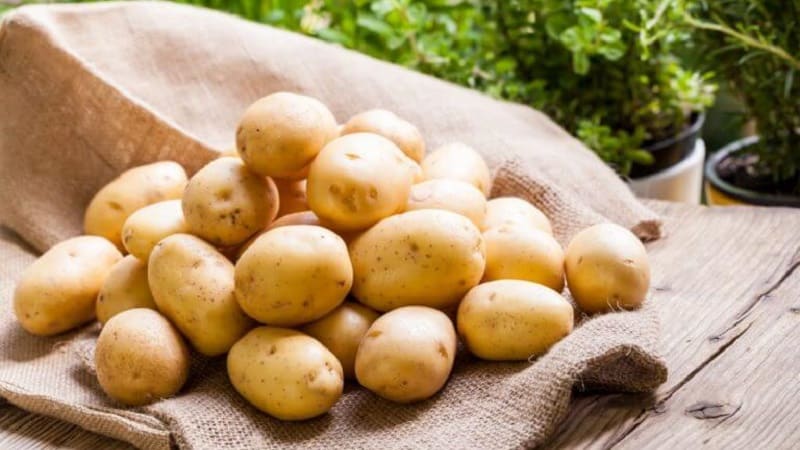
What is the difference from other varieties
What distinguishes Lina from other vegetable varieties is:
- high productivity;
- ease of care;
- immunity to diseases;
- insensitivity to different weather conditions.
Table. Comparison of popular potato varieties.
| Name | Ripening time, days | Yield indicator, kg per 1 hundred square meters | Tuber weight, g | Resistance to diseases and pests |
| Lina | 75–90 | 210–500 | 105—250 |
Resistant to potato blight and late blight. Susceptible to golden nematode |
| Baron | 70–75 | 110—370 | 110—190 |
Cancer resistant. Susceptible to late blight and scab |
| Zekura | 90–100 | 195–365 | 60—150 |
Nematode resistant. Susceptible to late blight, scab, glandular spot, leafroll virus, Y and A viruses |
| Sappho | 80–90 | 180–530 | 110—230 | Moderate resistance to canker, nematode, wrinkled, banded mosaic, leaf curl |
| Varmas | 60–70 | 210—380 | 90—120 |
Cancer resistant. Affected by scab, rhizoctonia, late blight |
Chemical composition, trace elements and vitamins
The Lina variety has a rich chemical composition. The pleasant taste of potatoes is due to the starch it contains (18.5%) and sugars - glucose, sucrose, fructose. Tubers have a lot of fiber. The protein content is low, less than 2%. However, it is close in composition to animal protein.
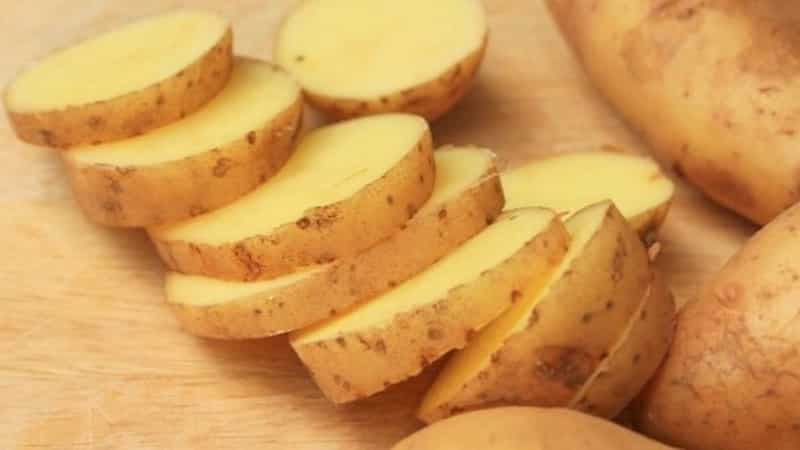
The composition contains free amino acids - about 20, in particular, essential ones.
Lina is characterized by a high content of vitamins:
- ascorbic acid;
- tocopherol;
- carotene;
- phylloquinone;
- Group B.
The variety is characterized by a high content of various macro- and microelements. Tubers contain a lot of potassium, magnesium, phosphorus, iron, iodine and fluorine.
Reference. Tubers contain fats and lipids, valuable organic acids - citric, succinic, malic. Thanks to the latter, the pulp does not darken during heat treatment.
When eaten, potatoes of this variety are well absorbed by the body.. Suitable for dietary purposes.
Characteristics of tubers and yield
The tubers of this variety are regular oval in shape, covered with a smooth yellow skin. with a small number of ocelli. The pulp is white in color. The weight of potatoes ranges from 105 to 250 g.
Lina potatoes have an attractive presentation and good keeping quality. The marketability rate is quite high - from 78 to 99%, so the variety is valued on the market.
From 7 to 11 potatoes are harvested from one bush. From 1 m² of potato planting you get from 2.1 to 5.4 kg, and from 1 hectare – up to 50 tons of crop.
Reference. Potatoes have a pleasant taste. Suitable for preparing various dishes, including chips.
Region for cultivation and planting dates
The variety was originally bred by breeders for cultivation in the regions:
- North Caucasus;
- Ural;
- West Siberian;
- East Siberian;
- Far Eastern.
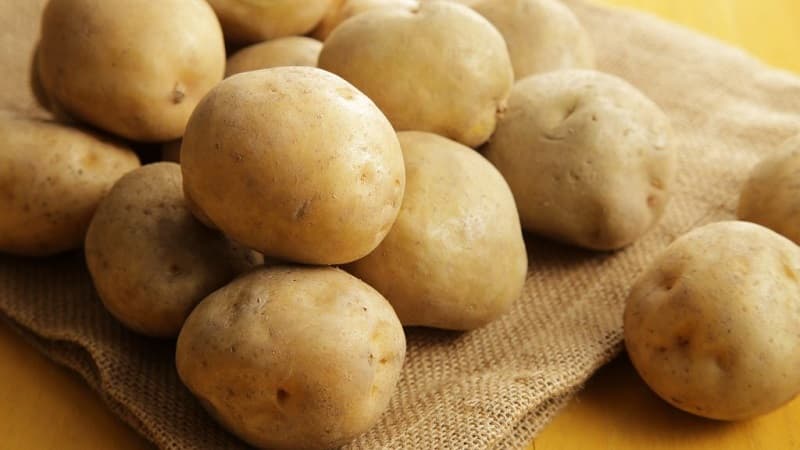
Today the Lina variety is grown in all regions of the Russian Federation, including in areas with unfavorable climatic conditions. It is popular in Moscow and the Moscow region, Novosibirsk, St. Petersburg.
Potatoes are planted in open ground when the ground warms up to +8⁰С at a depth of 10 cm. Planting usually begins in mid-May.
Interesting things on the site:
Early table potato variety "Palace"
The main advantages and disadvantages of the variety
Advantages of the variety:
- ease of care;
- resistance to cancer and late blight;
- frost resistance;
- drought resistance;
- excellent presentation and pleasant taste characteristics of tubers;
- suitable for the production of chips.
Lina potatoes have few disadvantages:
- high starch content in tubers;
- susceptibility to damage by golden potato nematode.
Features of planting and growing
Potato Lina does not require special care — it is grown following standard rules of agricultural technology.
Preparing for landing
Preparation for planting involves selecting seed. Tubers should weigh from 30 to 100 g and not be damaged. Productivity depends on their quality.Selected potatoes are germinated in a bright place for 20-30 days immediately before planting in open ground. Some gardeners disinfect them in potassium permanganate or soak tubers in growth stimulants.
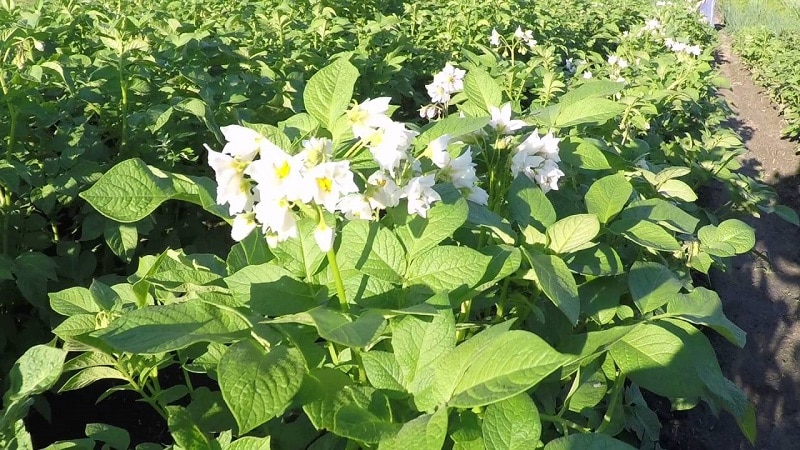
Important! For potato planting, select an area where beans, wheat or flax were previously grown.
The Lina variety is undemanding to soil. Any soil type suitable for cultivated plants will do. Before planting potatoes, plowing will be required. The area should be moist and well lit.
The soil is fertilized depending on the type of soil:
- heavy clay or loamy - humus or peat;
- peat - compost, manure humus.
Clay and coarse river sand are added to peat soil, and clay soil to sandy soil.
Reference. Potatoes are not fertilized with fresh manure; only humus is used.
Planting scheme and technology
Seed material planted in open ground, adhering to the standard scheme:
- distance between holes – 20 cm;
- hole depth – 12 cm;
- distance between rows – 60 cm.
Before planting potatoes, add to each hole 150 g of ash.
Features of cultivation
The vegetable crop of this variety is light-loving. It is undesirable to grow it in shaded areas - this is fraught with stretching of the tops, yellowing of the leaves, weak flowering, and low yield.
Potato Lina doesn't like acidic soil. Soil acidity is reduced by liming.
Reference. The maximum yield is obtained when grown on chernozem, sod-podzolic soil, gray forest soil and cultivated peat bog.
Nuances of care
Plant care involves systematic loosening and weeding. To protect the potato planting in the event of a threat of frost, the area is covered.
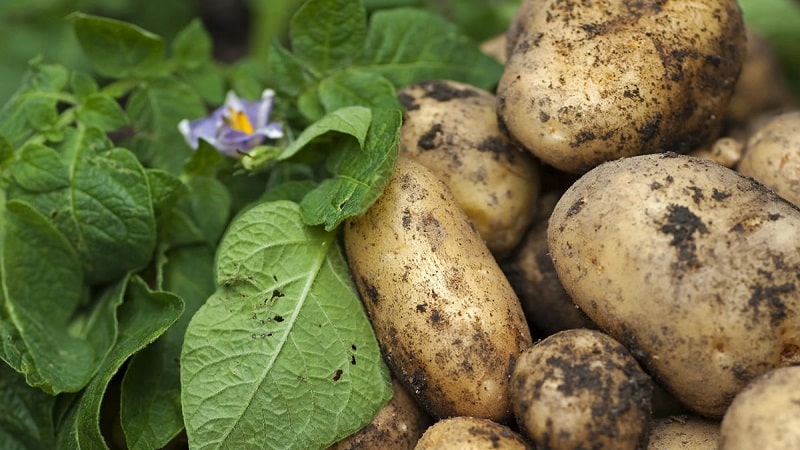
When sprouts appear, hill up. The procedure is performed three times throughout the entire ripening period.
Important. The site should not be allowed to become overgrown with weeds. Regular weeding is required.
Watering mode
The planting is watered moderately for the first time when the shoots appear. When forming a bush, the plant needs water. Wilting of the lower leaves is a sign of lack of moisture.
Abundant watering is provided during the flowering period, otherwise, lack of water will negatively affect the harvest. For irrigation, take water heated by the sun. Plants are watered in the morning or evening.
Read also:
Top dressing
Feeding is carried out 3 times:
- 10-14 days after planting, use mullein with urea diluted with water or bird droppings. A bush will require at least 0.5 liters of solution.
- During the period of tuber formation. Productivity will be increased by the application of mineral or complex fertilizers with a high potassium content. Plants also need phosphorus. It is recommended to mix 15 g of potassium sulfate and double superphosphate and dilute the mixture with water (10 l).
- 20 days before harvest. Use a mixture of 0.25 liters of manure and 30 g of “Superphosphate”, which is pre-diluted with water (10 liters).
Disease and pest control
Preventative measures will protect potato plantings from diseases and pests. We are talking about using high-quality seed, following the rules of agricultural technology, and replanting potatoes on the plot no earlier than after 4 years.
Treatment of plants against the Colorado potato beetle is carried out several times with the drug “Karate” or “Colorado”. You can replace the chemical with wood ash, a mixture of mustard and vinegar.
Used against nematodes drug "Bazudin". It is also effective against wireworms.
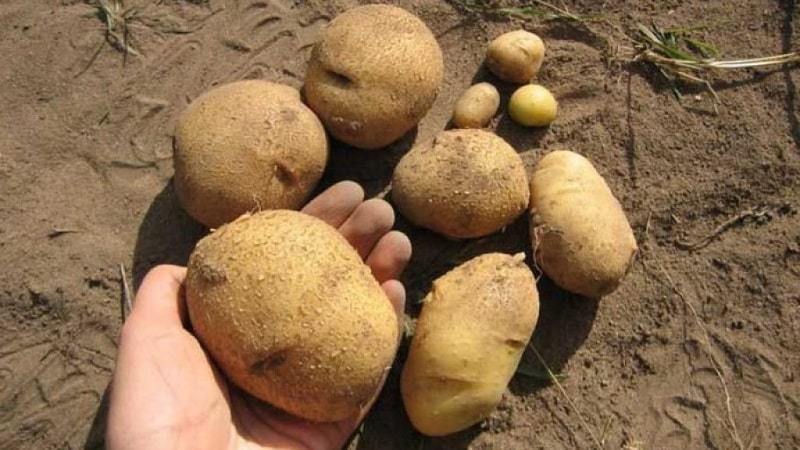
Harvest and storage
Timely harvesting and proper storage will increase the shelf life of potatoes and protect the tubers from spoilage.
How and when to collect
The harvest is harvested 80 days after planting. This is done in dry weather.
On the eve of digging up the tubers, the area is cleared of grass. The tops are not completely cut off, leaving a small part above the ground to determine the location of the tubers.
Storage features and keeping quality of the variety
The dug up tubers are dried and placed in boxes.. The harvest is stored in a dry and dark room with a temperature no higher than +5⁰С. For storage on an uninsulated loggia, special insulated boxes are used.
What difficulties may there be when growing
Lina potatoes are resistant to many diseases, but With incorrect agricultural technology, such difficulties can arise:
- fungal diseases, the causes of which are long-term cultivation of crops in one place, thickened planting, high humidity, low-quality planting material;
- bacterial diseases that threaten complete loss of the crop arise due to the proximity of other nightshade plantings to the potato bed or changes in temperature;
- viral lesions, difficult to cure, are carried by insects (cycads, aphids), occur when healthy and infected plants come into contact;
- deviations from the norm in the appearance and taste of tubers, provoked by an excess or deficiency of nitrogen, potassium, moisture or oxygen.
The main measure against all diseases their prevention is considered.
Advice from experienced gardeners and reviews about the Lina variety
Experienced gardeners when growing the Lina variety, it is recommended to increase productivity:
- Increase the number of sprouts that have awakened on each planting tuber. To do this, 7 days before planting, a deep transverse cut is made on each potato using a sharp knife. This measure will awaken the dormant reserve buds at the bottom of the tuber.
- When planting tubers in the ground, do not bury them too deeply. If the soil is dense, then it is enough to immerse the planting material 5 cm deep. If the soil is light - 8 cm. Potatoes are planted with the side down that contains more depressions with growth buds.
- When planting planting material in the same hole with potatoes, throw in some bean or pea seeds. These crops will use the potato stem as a support and enrich the soil with nitrogen. This will improve productivity.
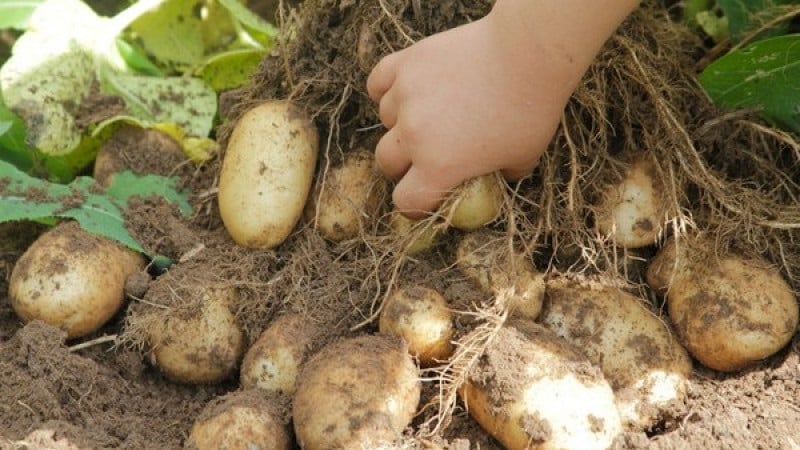
There are practically no negative reviews about the Lina potato variety. — the variety is considered one of the most unpretentious and productive.
Ekaterina, Saratov: “I heard a lot from friends about these potatoes. I looked at the photos of their beds, and Lina read the description of the potato variety herself on the Internet. I decided to plant it on my site. I planted 20 kg, dug 20 10-liter buckets. The variety does not require special care; agricultural technology is standard.”
Egor, Tver: “Having once planted Lina potatoes in my garden, now I only plant them. I like its pleasant taste. Lina is grown very easily and profitably. The number of tubers is approximately the same as that of Arosa. In favorable years, it is possible to collect 1 bucket of harvest from 1 kg of seeded tubers.”
Conclusion
Lina is one of the highest-yielding potato varieties. The plant can withstand both drought and heavy rains.The peculiarity of the variety is that the plantings do not require special care, but at the same time, the yield and shelf life indicators are always at a high level.